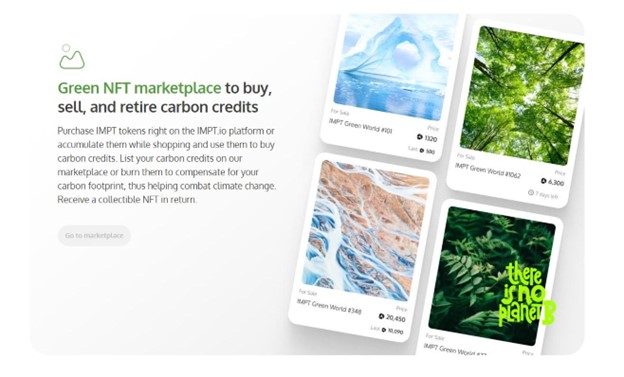Traditional industries are currently facing an ultimatum—either embrace new technology or succumb to old methods. Since 2008, blockchain technology has been central to this conversation.
According to recent estimates, corporations will spend nearly $20 billion on blockchain services by 2024. Overall, blockchain has emerged as a revolutionary and disruptive technology, creating opportunities across finance, real estate, entertainment, healthcare, and gaming. It’s also pivotal to Web3, and is undoubtedly here to stay.
One of the industries that is undergoing significant changes due to blockchain’s impact is fitness. The sector was worth $96.7 billion globally in 2020. Consequently, there’s an immense opportunity for projects integrating blockchain and fitness. Enter Step App, which aims to build the first-ever Fitness Finance (FitFi) Metaverse.
Fusing Fitness, Finance, and Crypto
Following the global outbreak of COVID-19 in early 2020, emergent GameFi platforms like Axie Infinity introduced novel incentivization mechanisms. With Play-to-Earn (P2E), for example, users were given the ability to monetize grinding while at the same time receiving lucrative rewards for their contributions and participation.
Similarly, FitFi incentivizes individuals to stay fit and live healthily. Step App, for instance, has introduced Move-to-Earn (M2E). This incentivization model rewards users who achieve various fitness goals on the platform.
Step App runs on Avalanche and features a native token, $KCAL, which it uses to distribute rewards. The KCAL token is based on Avalanche’s ARC-20 standard. Moreover, it is a deflationary asset with a maximum supply of five billion. Users can earn $KCAL by running, and in turn, can spend them to purchase SNEAK NFTs. They can also stake these NFTs to earn more $KCAL.
The Step App platform is also unique in its funding choice. Unlike most projects, it didn’t rely upon venture capital. The team has thus expressed its dedication to Web3 principles, aiming for a genuinely decentralized economy. This decision also minimizes the risk of whales dominating the project’s future.
Instead, Step App implements a fair token distribution mechanism. It’ll circulate 14% of the tokens through a public sale, and 30% through mining and the move-to-earn model. Additionally, users can earn 20% of the tokens through staking, liquidity, and in-game incentives.
The Brains Behind Step App
Step App’s team and advisors are completely doxxed. The community often considers this a green flag, because there’s enough scope for performing due diligence before investing. Moreover, the people behind this venture are also deeply experienced in fitness, despite working in different industries.
Dharpan Randhawa, the project’s president, was heading up McLaren Racing’s commercial business in APAC and sports industry veteran. He currently runs the Talisman, a global agency that is redefining the sports & gaming sectors through groundbreaking partnerships.
Step App’s CEO, Kirill Volgin, was formerly the CFO at Zerion, a trusted multi-chain wallet for Web3. Its CTO, Dmitry Gordeychuk, is also a pioneer in DeFi. He was Head of Blockchain at Symbiosis Finance. Lastly, Step App’s Head of Partnerships, Cassandra Galante, was once an operations associate at Injection Labs.
Running with Step App
Step App features several ways in which users can earn in-game rewards. They can compete using staked governance tokens, with a 2.5% fee on the winning pool.
In the case of global and regional competition, the game uses ranking and leaderboards to keep track of players’ progress and achievements. Winning tournaments rewards players with unique avatar skins and a dedicated leaderboard. Tournaments are ticketed, however, with the revenue from ticket sales going to the overall winning pool, and 5% going towards the game.
To get started, users must first register themselves on Step using their email IDs. Following this, they receive FAT tokens and SNEAK NFTs. The project also has a refer-to-earn feature, which allows users to invite friends and earn additional FAT tokens.
Players must burn the collected FAT tokens and earn KCAL tokens to earn while walking. The KCAL-to-USD rate is currently at about $60.64. For a holistic in-game economy experience, users can also purchase map styles, character skins, sneaker skins, and more.
In Step App, the user’s avatar grows and evolves until they achieve their fitness quests. The app also features a Player-versus-Player (PvP) mode, allowing players to compete with their friends and family. This also helps combine their fitness goals to ensure a rich, in-platform social experience. Finally, users who successfully complete quests can also earn unique and valuable NFTs.
Moving to Glory?
The project strongly intertwines its social dynamics with tokenized earning mechanics, focusing on experience-based consumption to guarantee that token emissions are offset by leisurely spending.
Step App’s early campaigns have already attracted over 8,803,739 registered users well ahead of its official launch in Q3 2022. In fact, prominent athletes like Daniel Ritchie have already even onboarded the platform as fitness ambassadors.
Without a doubt, Step App is certainly making noticeable strides toward becoming a pioneer in the blockchain-powered FitFi movement. In the long run, it will help people reimagine their fitness goals moving forward, working to lay the foundation for a healthier and more active world.
Image by Pexels from Pixabay











